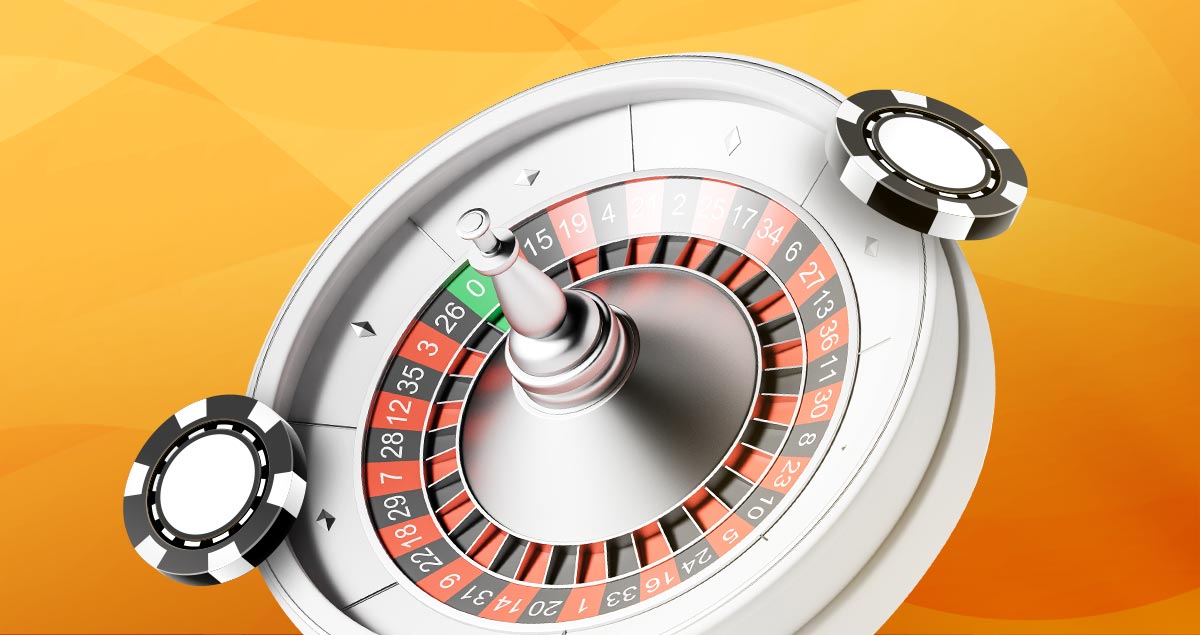Choosing which roulette game to go for can seem like a daunting task.
With so many variants, wheels, rules and numbers, it’s completely understandable for players to take their bets elsewhere by playing other games instead.
The reality is that roulette is far from the complicated mess it seems to be.
In this post, we’ll be giving you a complete but concise rundown of roulette, helping you discover the roulette table that best suits your preferences!
Understanding Roulette Tables
The roulette table is simply the betting layout where players can place their chips (be they physical or virtual) to bet on the outcome of the game.
In order to place bets on specific outcomes, you must place your chips in different ways.
For instance, if you think that the winning number will be 12, you must place your chips directly on that single number.
If you want to place a bet on red numbers, you must place your bet on the ‘red’ section.
Once your wagers are placed, the croupier will collect all wagers and let the ball spin.
At this point, the ball spins around the roulette wheel until it falls in any of the numbered pockets.
If you’ve correctly predicted the number, your stake will be returned to you with a payout. After that, new wagers are placed and the next spin will occur.
Two Must-Haves: Roulette Wheels and Roulette Tables
There is no roulette without the wheel and table. Although we’ve already covered the premise of the table, that is only half of what goes on during the game.
Exploring Roulette Wheel Mechanics
Although you won’t have to study how a wheel works to start betting, it’s pretty good to know how the roulette balls end up in pockets.
To start off, a plastic or ivory ball is spun in the track in the frame that holds the wheel.
As the ball loses momentum, the centrifugal force is no longer sufficient to hold the ball in the groove and it falls down the face of the frame.
As the ball hits a block its trajectory is randomly altered on all 3 planes (X, Y, and Z) causing the ball to bounce and skip until it will fall into a pocket.
Types of Roulette Tables: Features and Differences
As you can tell, there isn’t just one single roulette table that hosts all the games in the world. There are three different ones: an American, European and French roulette table. Although roughly similar, each table is different in its own way. Here’s how.
American vs. European Roulette Tables
The American roulette wheel features 38 pockets, including the numbers 1-36, a single zero (0), and a double zero (00).
The additional double zero increases the house edge slightly compared to other variations.
The European roulette wheel is similar but it has 37 pockets, including the numbers 1-36 and a single zero (0).
The absence of the extra zero gives European roulette a lower house edge compared to the American version.
Mastering Roulette Table Layout: Key Elements
Seeing as there is no skill involved to affect the outcomes in roulette, you’re better off understanding the table layout.
We’ll also take it a step further and say that you only have to nail down the even-money bet placements if you want to start playing roulette effectively.
The idea here is to create stakes on the outcomes that have the highest probability of paying.
Although you won’t be receiving the maximum wins possible, you will have the best chances of getting paid.
After all, the game is played based on systems involving luck and physics, so it would be wise to bank on the 50-50 outcomes such as Red or Black and Odd or Even wagers.
Pros and Cons of Different Roulette Tables
Which roulette wheels should you try a spin on? To come to that conclusion, you’ll have to calculate the pros and cons of the two main tables.
American roulette offers higher payouts on individual numbers and it can provide a faster-paced game due to additional betting options.
The cons are a higher house edge (5.25%) due to the presence of the extra zero and lower odds of winning compared to the European version.
Speaking of it, the pros are a lower house edge (2.6%) and better odds. The cons are that the winning potential is somewhat less than the American version.
Factors to Consider While Choosing the Right Roulette Table
Which roulette wheels should you play? That will always depend on your risk tolerance, rule preference and average gaming budget.
For example, you might prefer paying attention to the house advantage when choosing your roulette game, or you could go to the opposite side of the spectrum and opt for the American version.
As with every casino game out there, we highly suggest trying some demo versions before buying chips with real money.
It is only then that you will find which roulette table is more in line with your style of play.

 English
English  Polish
Polish  Ukrainian
Ukrainian  Russian
Russian  Greek
Greek  Portuguese (Brazil)
Portuguese (Brazil)  Slovenian
Slovenian  Hungarian
Hungarian  German
German  Spanish
Spanish 
